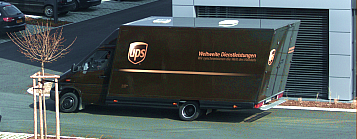
IDS peak 2.17.1 / uEye+ firmware 3.70
IDS Peak comfortSDK, genericSDK, IPL, and AFL developer manuals are external documents. Please contact us if you need them.
|
Note to the timing diagrams The illustrations show a schematic view of the image capture process. The sensor exposure and readout times depend on the camera model and settings. For more information on flash timing see the chapter Using digital inputs/outputs. |
During image capture, the most important phases are the exposure and the read out. Before exposure, all relevant pixels are reset, i.e. their charge is emptied. During exposure, the pixels collect photons and convert it to electrical charge. After exposure, this charge is transferred to the sensor's electronics and read out to the subsequent modules of the camera, e.g. the FPGA.
The sequence of these steps differs for the global shutter method and the rolling shutter method.
A global shutter sensor starts and stops the exposure of all rows simultaneously. In other words, all pixels are exposed for exactly the same duration and at exactly the same point in time. On exposure end, all pixels transfer the collected charge to a storage node to protect it from unwanted further exposure until read out. The read out process is sequential, row by row.

Fig. 12: Global shutter sensor
With global shutter sensors, fast-moving objects can be captured without distortions. If you use an artificial light source for illumination, make sure that the frequency of the illumination and the frame rate of the camera match to avoid beating of the image brightness (slow "breathing", flickering), see chapter Flicker.
The pixel design of global shutter sensors is more complex compared to rolling shutter sensors. Thus, global shutter sensors are typically more expensive.
With rolling shutter, the exposure starts for each row separately and sequentially. It stops after integration time, transferring and reading out the pixels row after row.

Fig. 13: Rolling shutter sensor
Although all rows are exposed for exactly the same period of time, the point in time for each row's exposure is slightly different. Each row caught the scene at a slightly different point in time. As a results, moving objects in the scene may appear distorted. This is called the "rolling shutter effect", see following picture or animation below.

Fig. 14: Example for the rolling shutter effect with a moving car
Using artificial lighting, rolling shutter sensors can show dark and bright horizontal stripes. These stripes can be stationary or marching vertically across the image. Increasing the exposure time leads to a lower contrast between bright and dark stripes. To completely eliminate this disturbance, rolling shutter cameras usually offer a global flash window, to expose all sensor rows at the same time by firing a flash signal as soon as integration has started in each row.
The pixel design of rolling shutter sensors is generally less complex compared to the pixel design of global shutter sensors. Therefore, rolling shutter sensors are cheaper.
Rolling shutter with GlobalReset
Some rolling shutter sensors offer a GlobalReset mode (global start mode). In GlobalReset mode, the exposure of all rows is started simultaneously. For optimum results, you must use a flash in GlobalReset mode. No light should fall on the sensor outside the flash duration, otherwise this will result in an uneven brightness distribution in the image.

Fig. 15: Rolling shutter sensor with GlobalReset
For the following models, you can change the shutter mode (SensorShutterMode) of the camera to "GlobalReset" when the "ExposureStart" trigger (TriggerSelector / TriggerMode) is enabled:
Rolling shutter video

